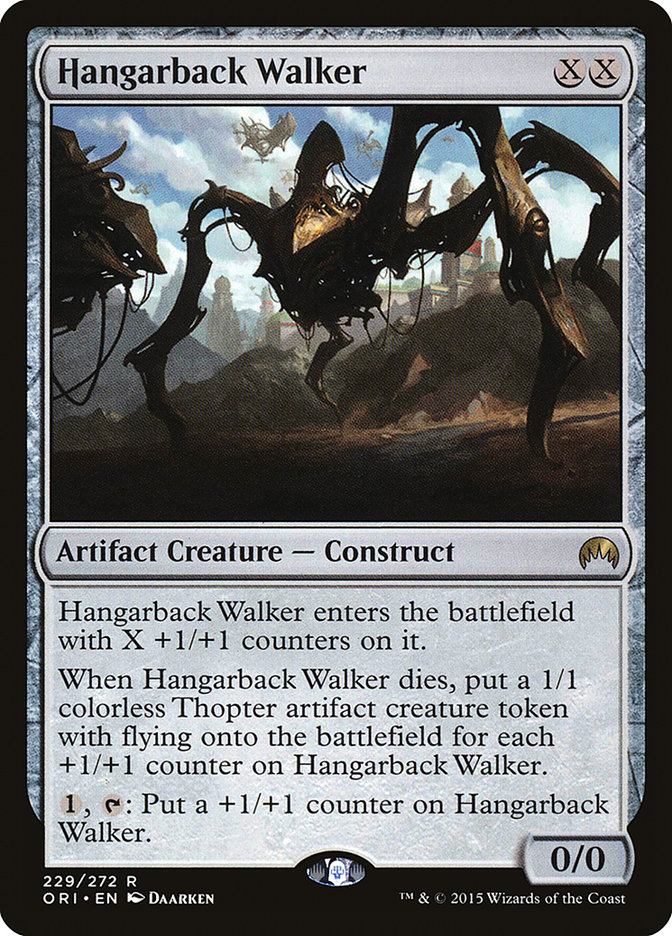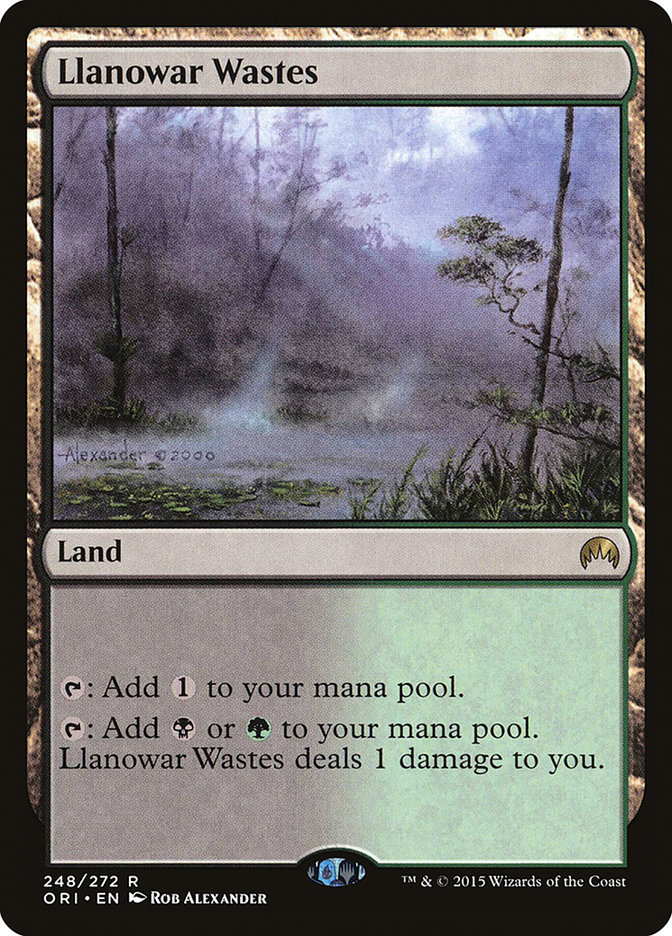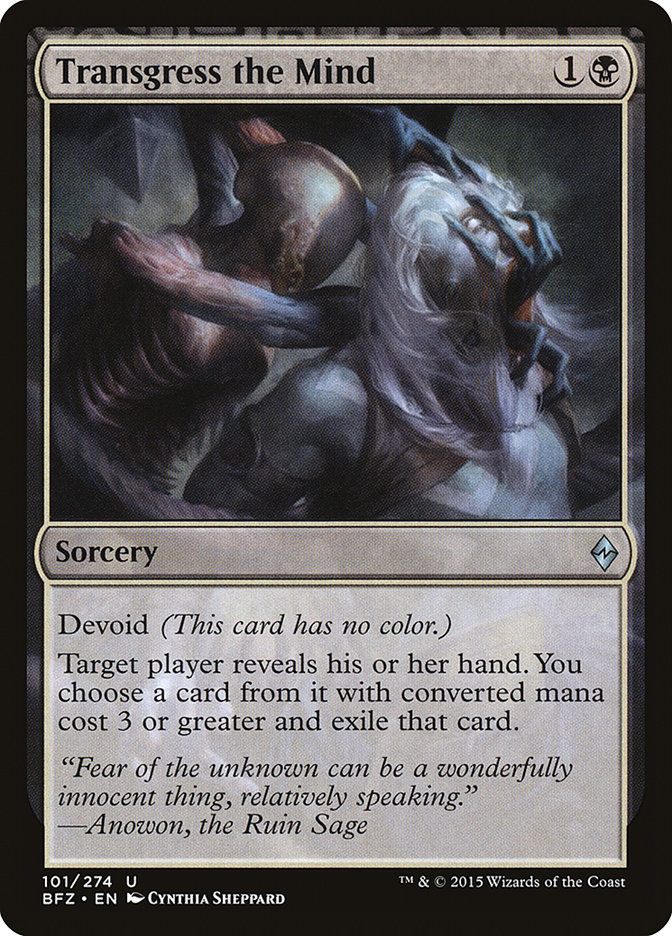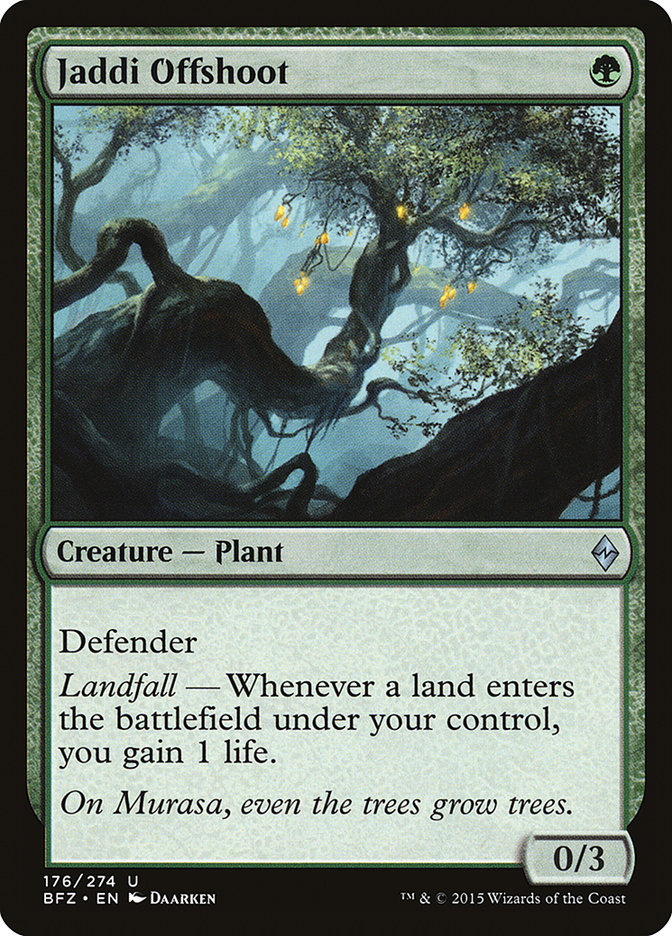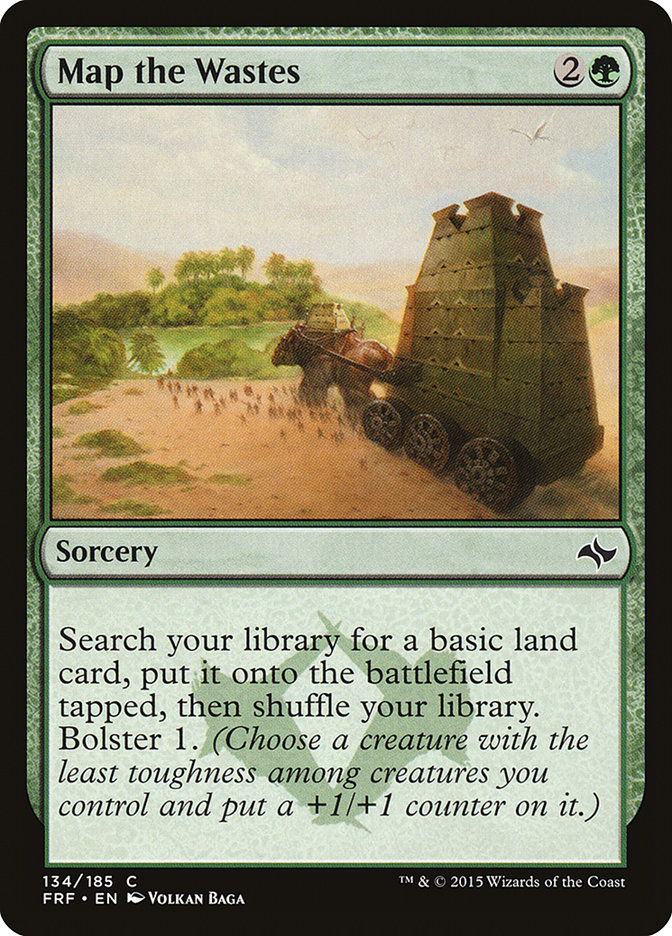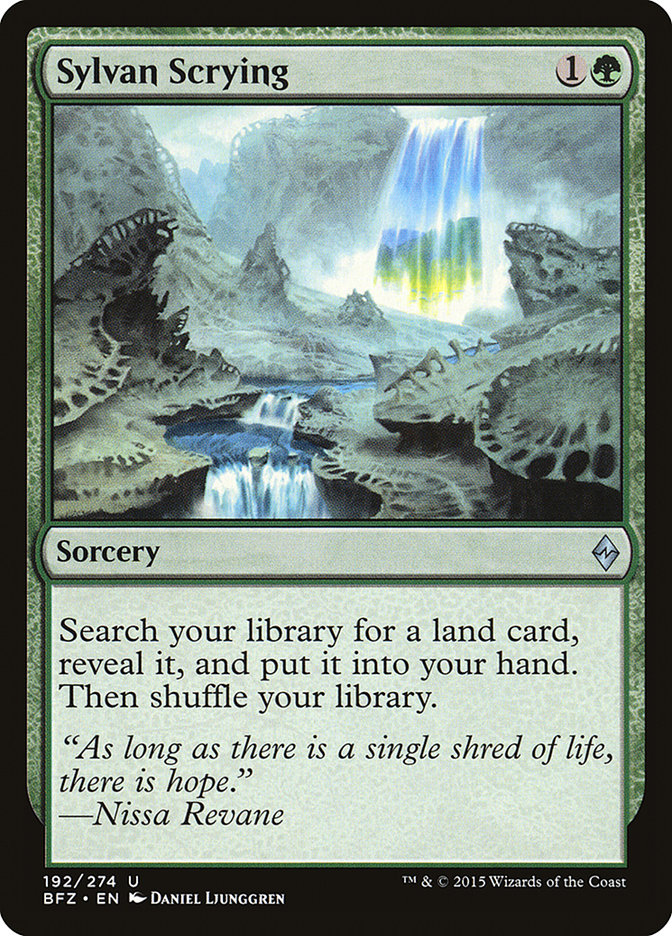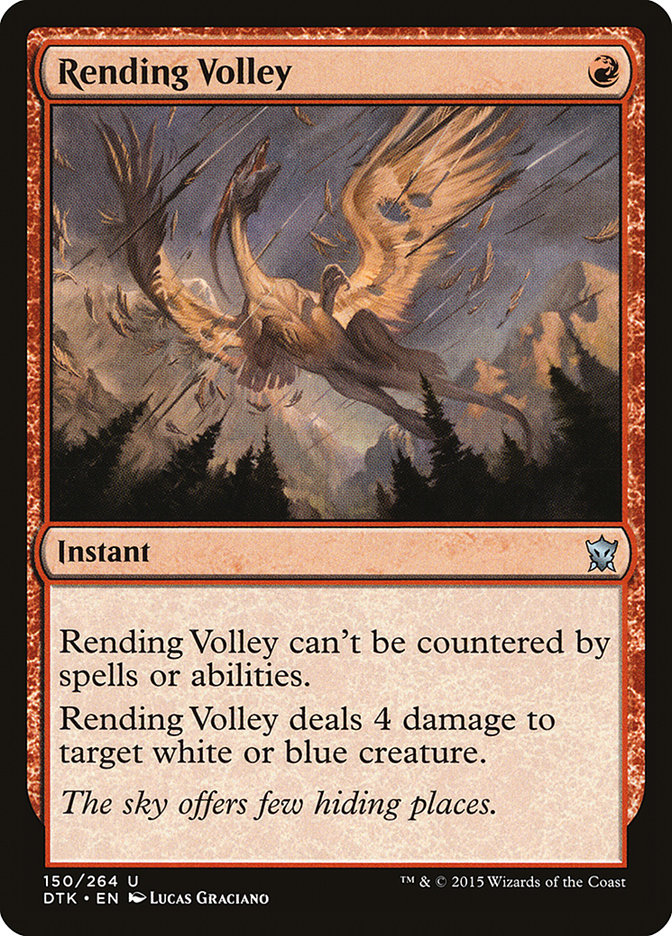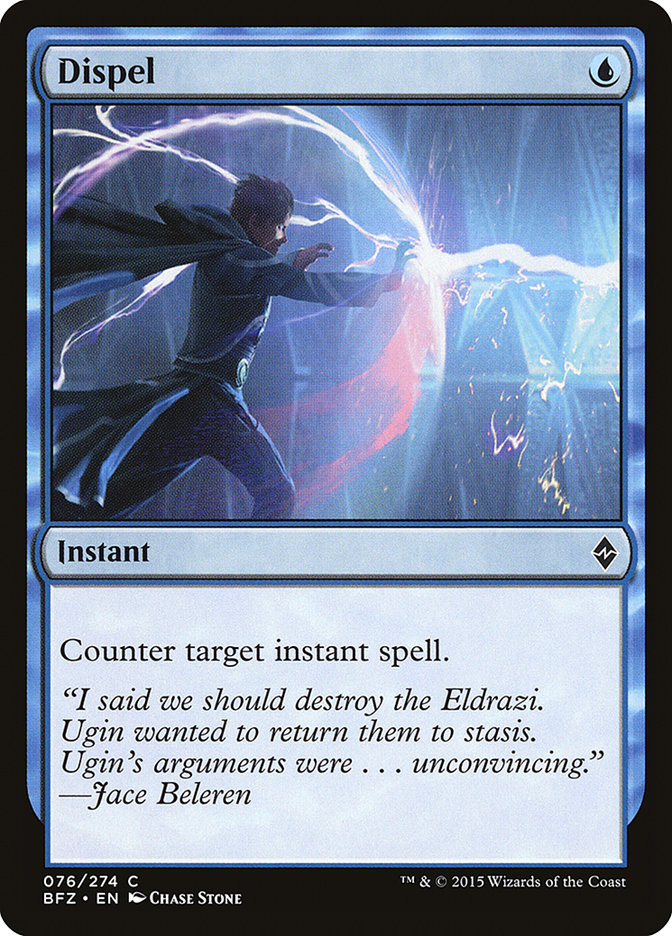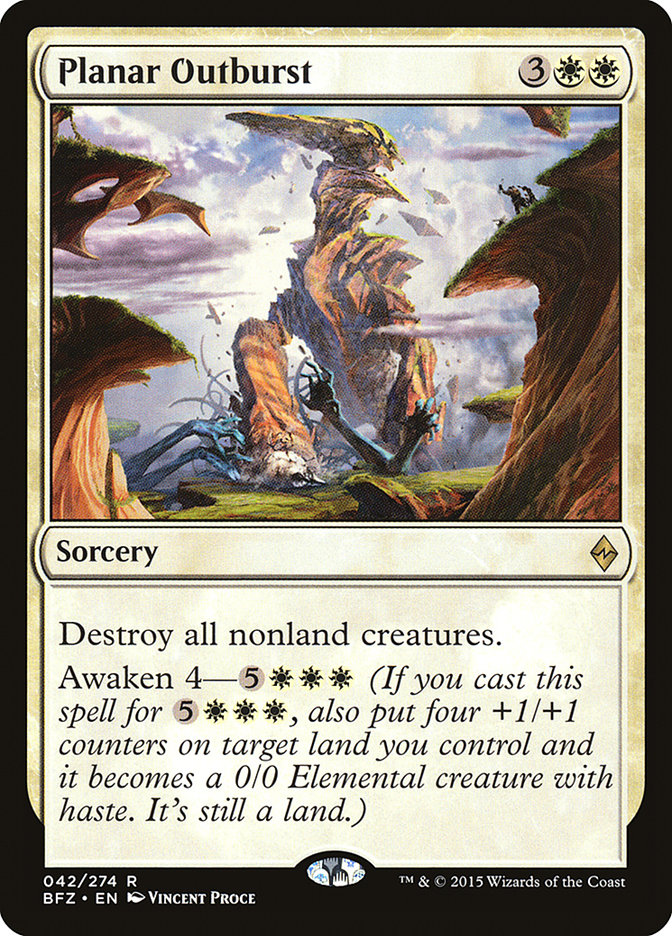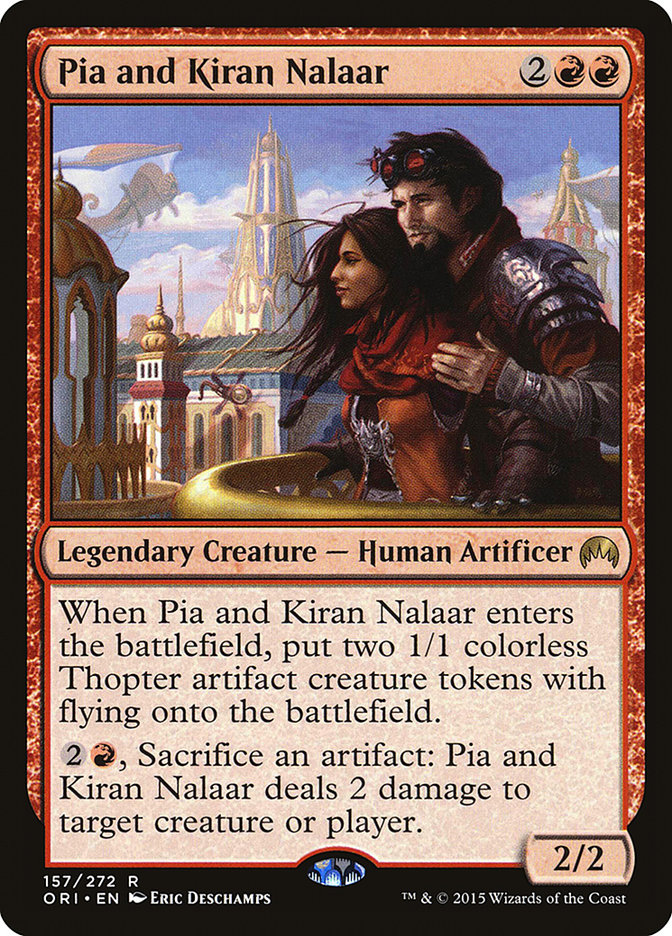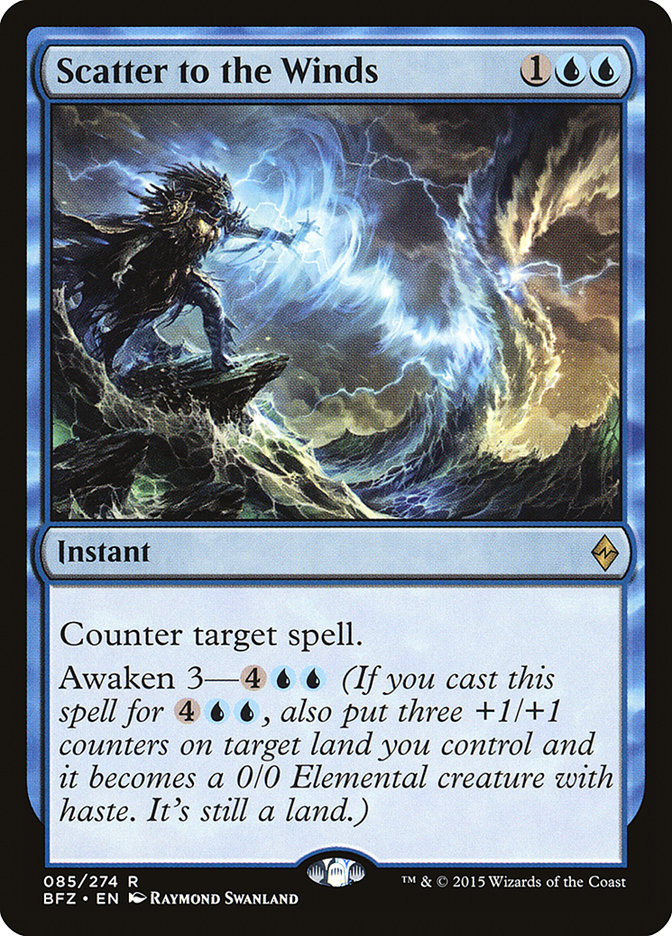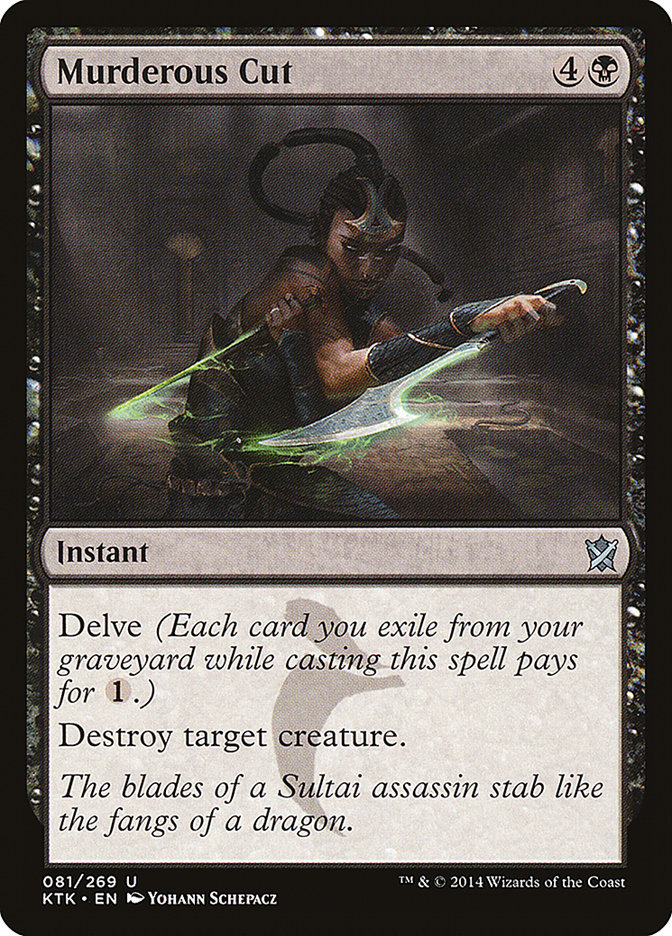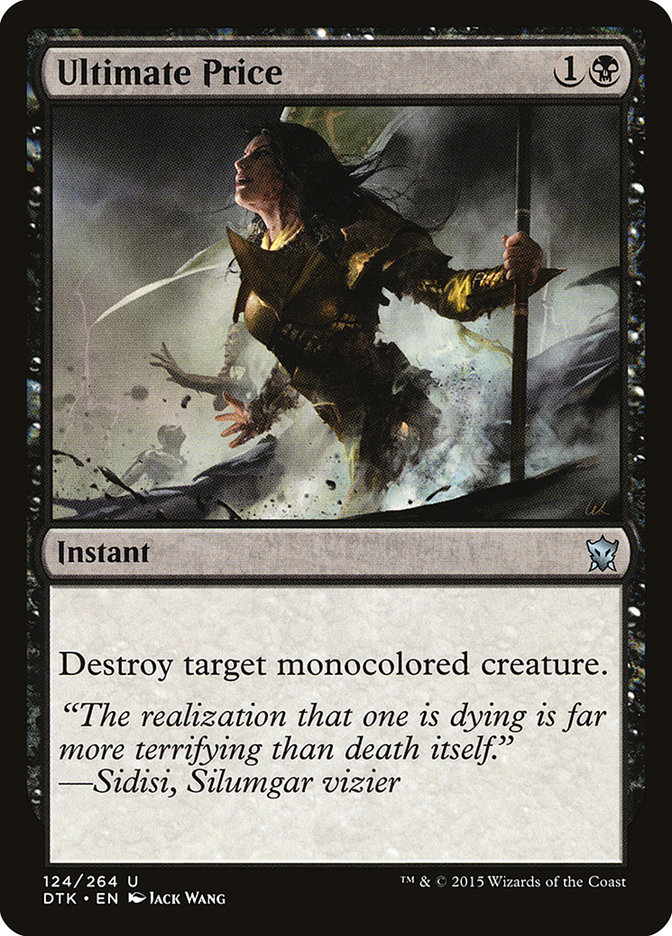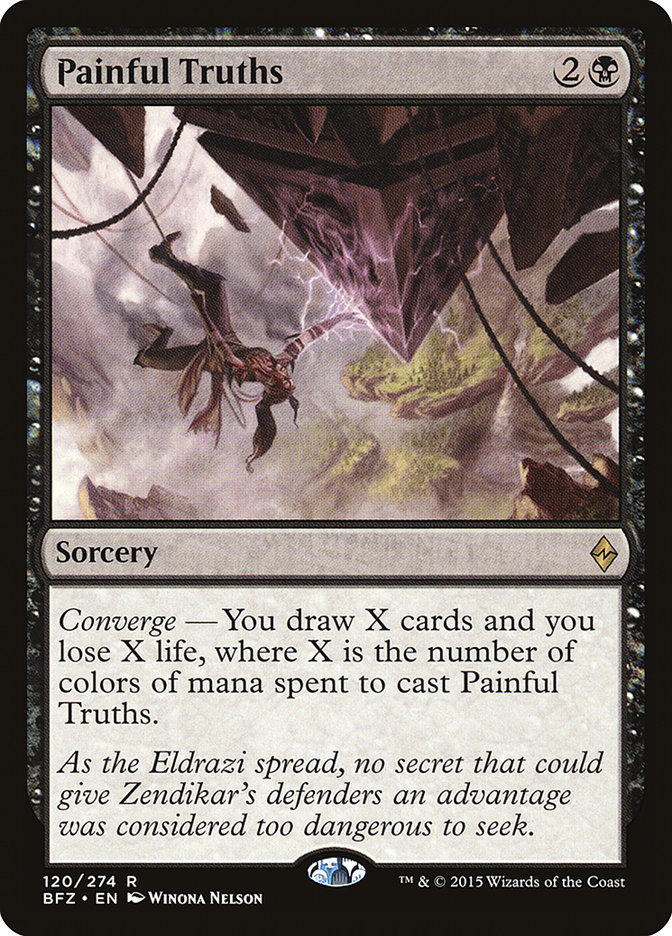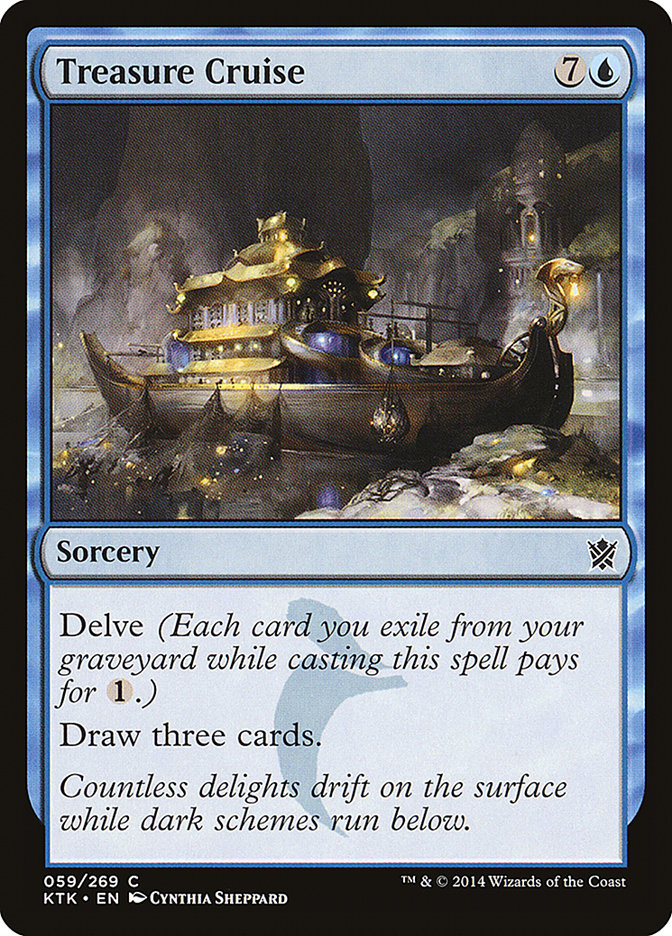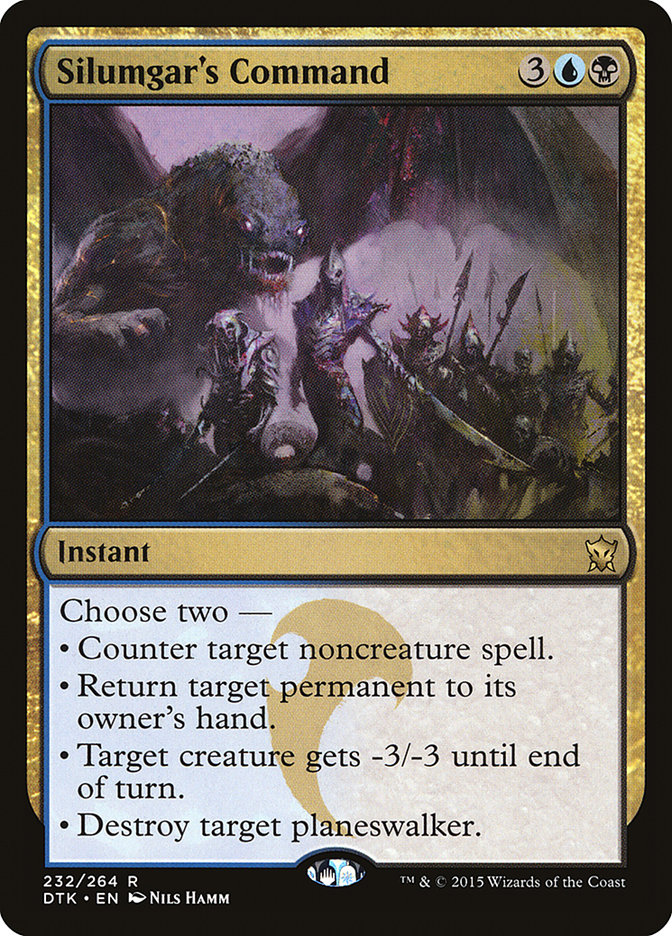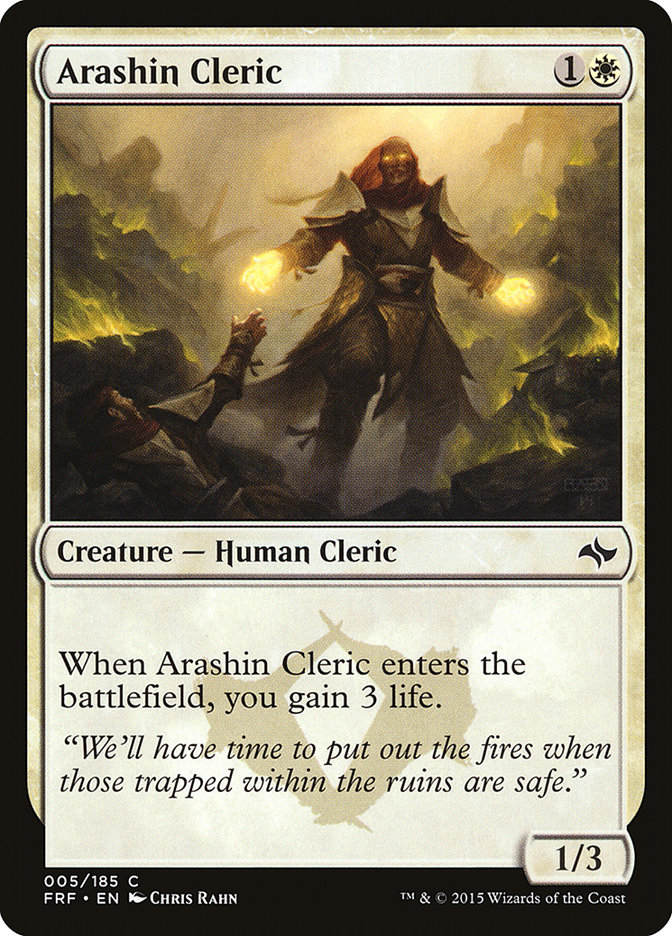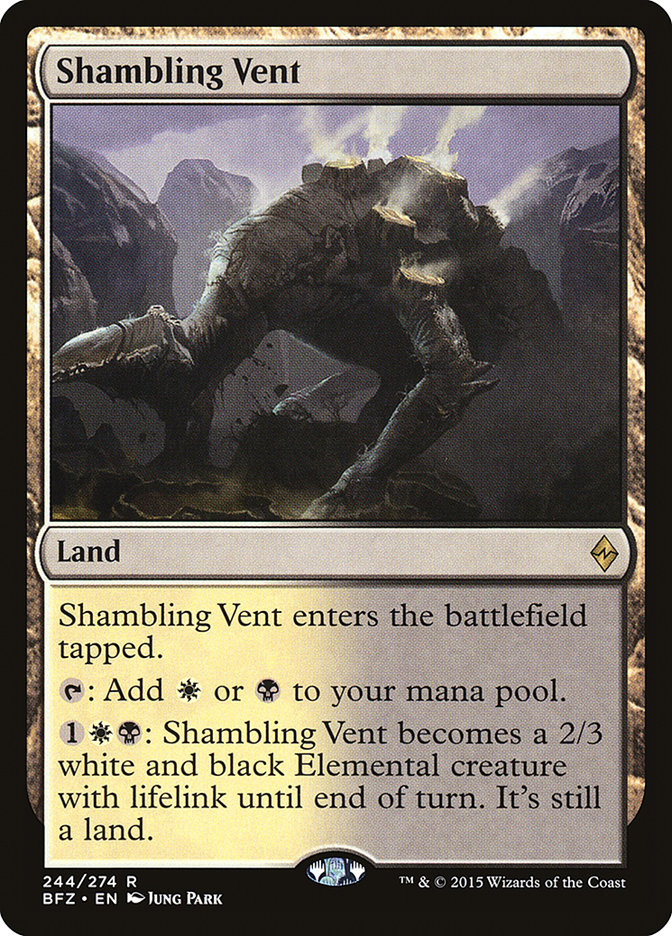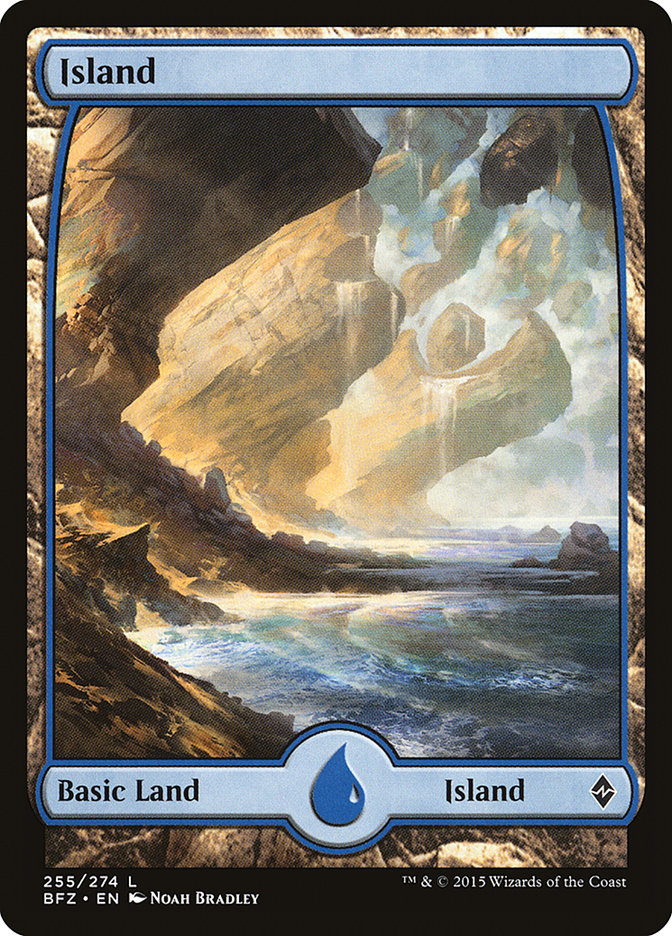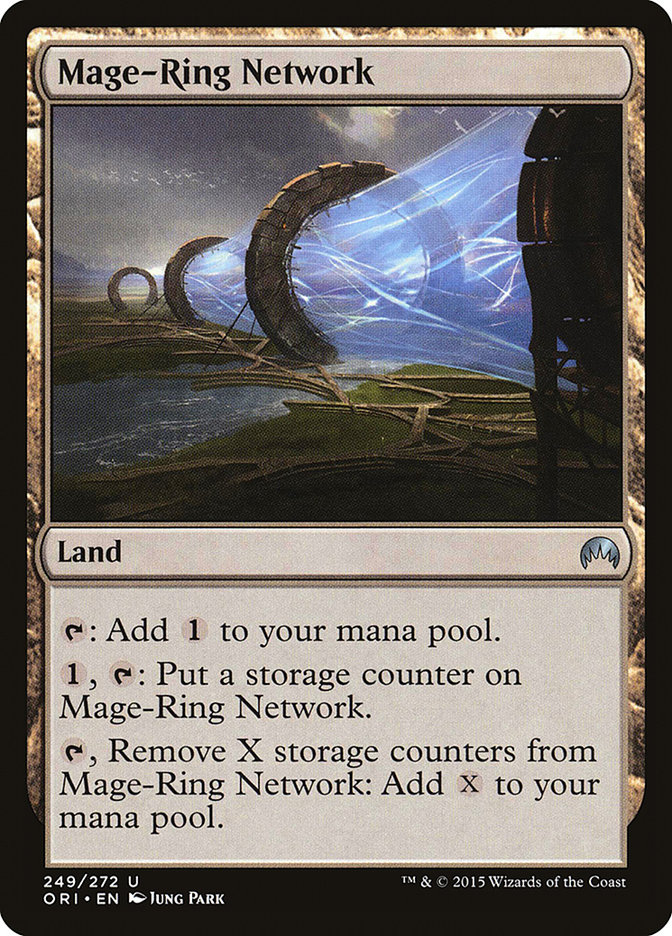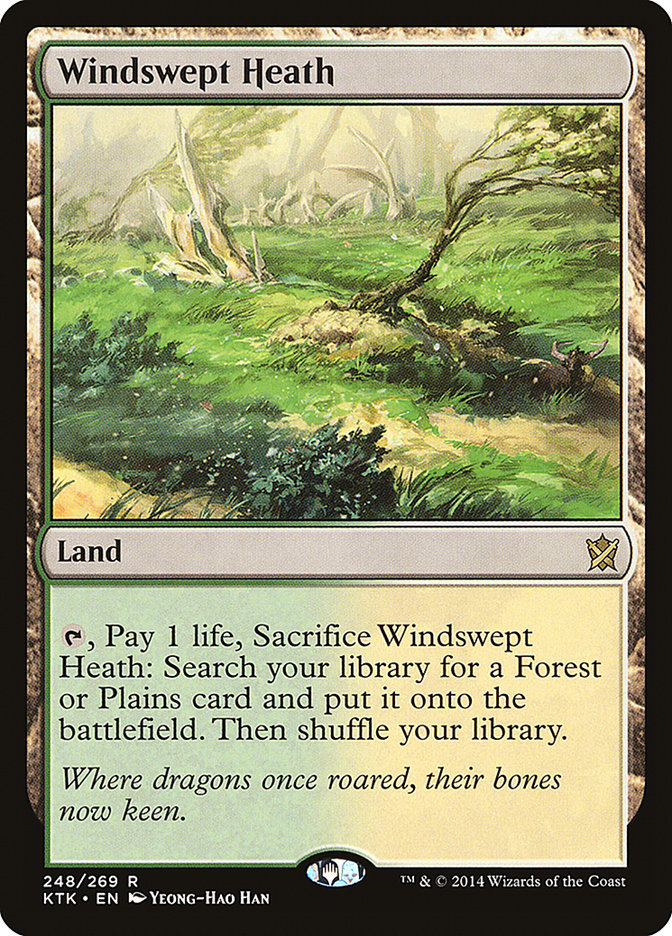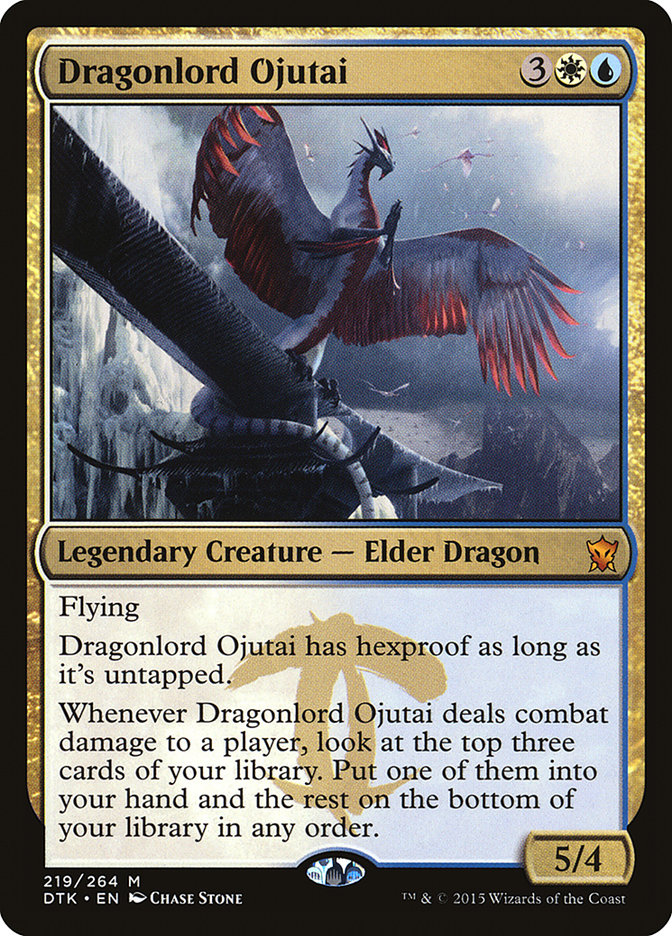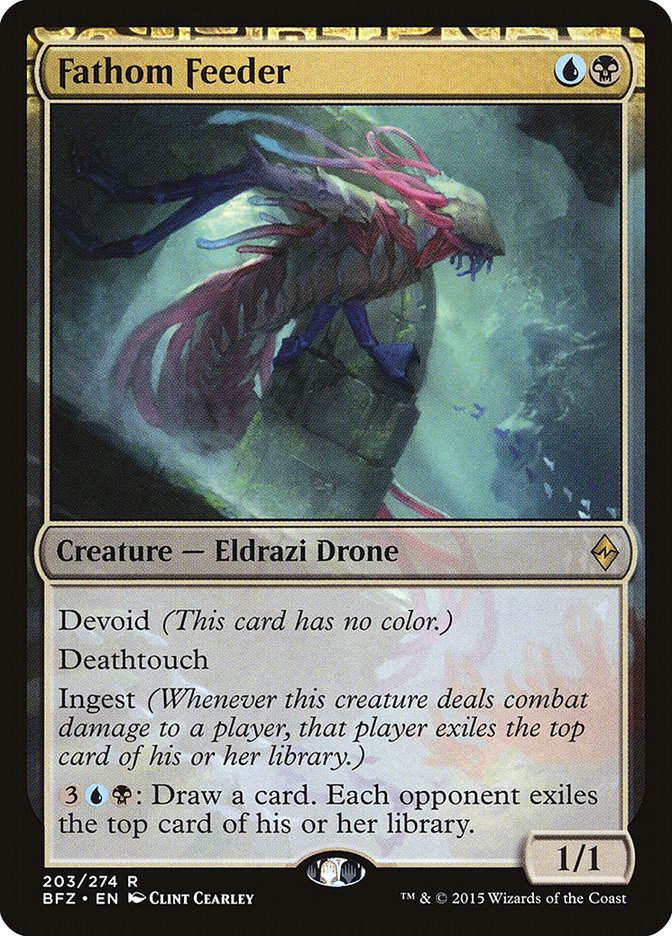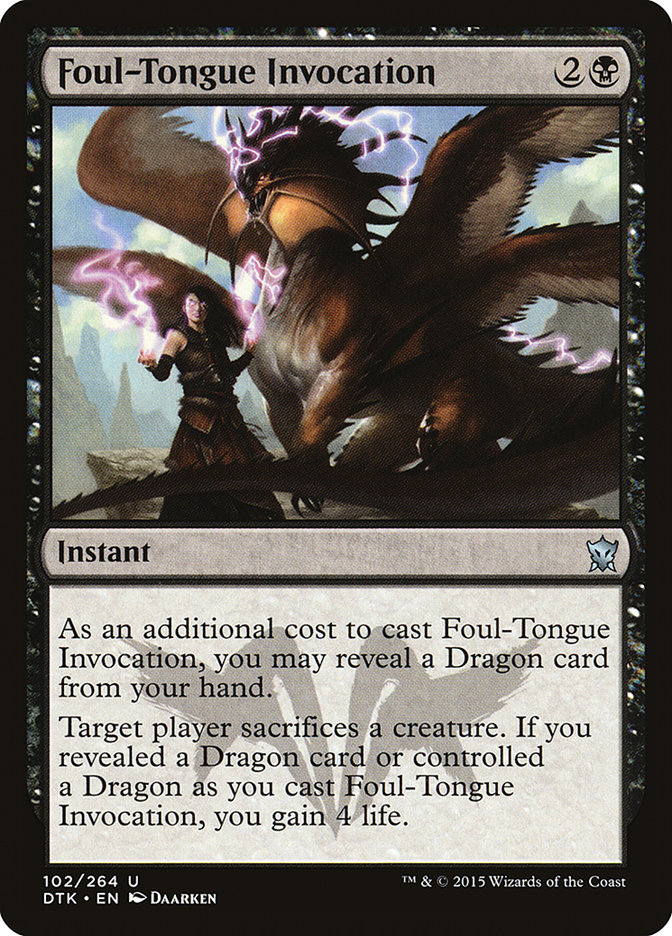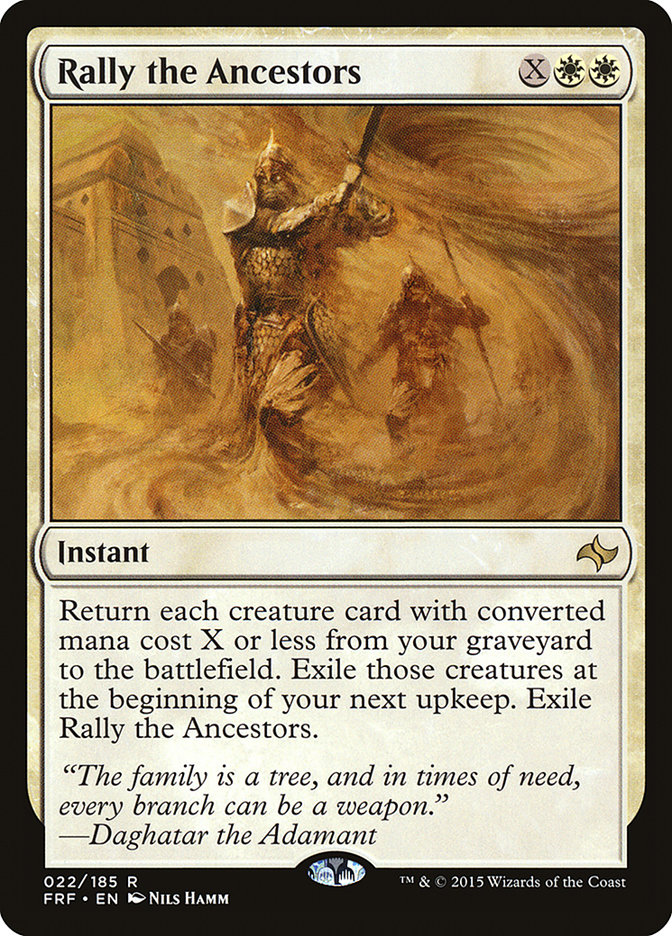The line between perception and reality is an interesting one.
Last week, Kazuyuki Takimura won Pro Tour Battle for Zendikar with an Abzan deck, helping give the impression that Abzan is the deck to beat despite the
archetype performing below 50% on day 2s every single week since Battle for Zendikar became legal.
Predictably, Abzan was the most played deck this weekend; and predictably, it fell off the deeper into day 2 we got. The problem? It loses to the second
and third most played decks! We’re not talking blowouts or anything, but being less than 50% against Jeskai and Red Aggro adds up over time since they make
up nearly 40% of the field.
Here’s a breakdown of the day 2 metagame of Grand Prix Quebec City:
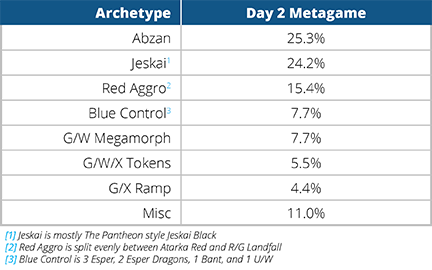
The field being a quarter Abzan and a quarter Jeskai variants (usually Jeskai Black) is pretty wild! What’s particularly interesting is that this looks a
lot like week one of the format, except this time Red Aggro couldn’t sneak past the Jeskai decks to get to the top 8. Additionally, some of the decks have
improved a great deal from being properly tuned (Abzan, Jeskai, and Esper), whereas some have barely changed at all (Atarka Red and G/W Megamorph).
Let’s start with the so-called deck to beat:
Creatures (21)
- 4 Anafenza, the Foremost
- 2 Wingmate Roc
- 4 Siege Rhino
- 1 Tasigur, the Golden Fang
- 4 Warden of the First Tree
- 2 Den Protector
- 4 Hangarback Walker
Planeswalkers (4)
Lands (26)
Spells (9)

There isn’t enough variation among Abzan decks to differentiate between Aggro and Control, anymore. Basically everyone builds around Warden of the First
Tree and Anafenza, the Foremost. As always, it’s basically just a bunch of really high quality cards shuffled together. Siege Rhino and Abzan Charm are
really strong cards, and getting to play them is a big payoff.
The biggest weakness of Abzan is the lack of a good two-drop. It’s not that Hangarback Walker isn’t a good card, it’s just that the format has gotten
hostile for the card, and it’s not as natural a fit into Abzan’s strategy as it used to be. It is nice, though, that Beland’s heavy use of Gideon, Ally of
Zendikar and Sorin, Solemn Visitor give us extra value from the tokens. The Wingmate Rocs also benefit from the incidental 1/1 flier increasing the chances
we’ll be able to get the raid trigger.
Dromoka’s Command and Murderous Cut are great cards, but neither they, nor Abzan Charm is particularly good at killing Zurgo Bellstriker. That said, not
everyone plays Atarka Red anymore. The move towards the slightly slower creature-suite in R/G Landfall is a little less bad for Abzan, though still not a
good matchup for them.
How strange that Sandsteppe Citadel isn’t even playable anymore. The desire to untap our Battle lands is great, and Shambling Vent is just a much more
powerful Magic card. That said, Beland does make a minor concession with the use of two Llanowar Wastes.
Why Llanowar Wastes instead of Bloodstained Mire and a Cinder Glade? The problem with that approach is that you not only need a Cinder Glade (decreasing
the number of green that are untapped), but you also need a Swamp. Besides, Bloodstained Mire doesn’t cast Warden of the First Tree on turn 1.
Transgress the Mind fell out of favor early on, but is the discard spell of choice for fighting Abzan mirrors. It’s also the perfect discard spell for
combating Eldrazi ramp decks, should anyone find a way to make one work…
Creatures (13)
Planeswalkers (4)
Lands (25)
Spells (18)

Jake Mondello is living the Ulamog dream, thanks to a couple of key innovations.
Jaddi Offshoot is particularly great at blocking Soulfire Grand Master and Zurgo, but its ability to gain 1-3 life a turn can go a long way towards helping
buy us enough time to survive a Mantis Rider. It’s not a long-term plan, of course, but if we can live long enough to start dropping Atarkas or Ugins, they
can usually take it from there.
Map the Wastes is an oft-overlooked ramp card that can help ensure we get the red mana we need while also serving as a mondo combo with either Hangarback
Walker (getting an extra +1/+1 counter) or Jaddi Offshoot against tokens like Dragon Fodder, Hordeling Outburst, or Secure the Wastes.
Notice the complete lack of Rattleclaw Mystics or any other mana creatures. Instead, Mondello relies nearly entirely on lands for mana, maximizing the
power of Shrine of the Forsaken Gods. The only non-land mana source is Hedron Archive, partially because its power level is just so high and partially
because it can be cashed in for two more cards, which typically finds the land you need if you are trying to get some Shrines active.
Sylvan Scrying is particularly potent in this build since we’re so well set up to get Shrines active early and often. This makes Scrying for a Shrine a
common play, but it’s also completely reasonable to find our red mana for the turn 3 Seismic Rupture, or setting up the eventual turn 5 Dragonlord Atarka.
Remember to find Haven of the Spirit Dragon, instead of Mountain, if your Dragonlord Atarka is the only red spell you need to cast!
Sanctum of Ugin is also a solid choice, with Hangarback Walker and Ugin, the Spirit Dragon both capable of turning one into an Ulamog on top of your
library. This list, in particular, goes a lot bigger than most Eldrazi decks I’ve seen.
Once you start dropping big threats, you’ll usually be able to play one a turn for enough turns in a row to grind through most opponents, regardless of
removal. There are nine big threats, but there are also nine Sanctums/Scryings/Havens to find more, plus the Hedron Archives. This list even has a fourth
Ulamog in the sideboard for control matchups that might go long, not to mention Nissa, Vastood Seer for any grindy matchups.
Rending Volley has really gained in utility over the past couple of weeks. It’s nice that it kills Anafenza for one mana or helps a Hangarback Walker take
down a Siege Rhino, but its primary role is against Jeskai, where it can kill a Jace, Soulfire Grand Master, or Mantis Rider on the super cheap. It’s also
a contributor to the need for Jeskai to move towards Tasigur, and away from Butcher of the Horde.
Of course, even with Rending Volley, the Jeskai matchup is the single-biggest roadblock to a full-on Eldrazi invasion. Fittingly, Mondello was eliminated
in the top 4 by Jeskai, with its fast, flying aggression, “must-kill” creatures like Jace, and a variety of annoying interaction, like Kolaghan’s Command
on Hedron Archive.
Here’s the list that knocked him out, piloted by Omar Beldon on his way to a runner up finish:
Creatures (13)
- 1 Dragonmaster Outcast
- 4 Mantis Rider
- 2 Soulfire Grand Master
- 2 Tasigur, the Golden Fang
- 4 Jace, Vryn's Prodigy
Lands (26)
Spells (21)

Beldon’s list is very close to The Pantheon formula Jon Finkel and Owen Turtenwald top 8ed with. This deck is, without question, the deck to beat. Week
one, it was Atarka Red and Jeskai Black. Week two, G/W Megamorph and Jeskai Black. Week three, Abzan and Jeskai Black.
Seriously, the deck to beat is Jeskai Black.
Beldon has added a maindeck Duress, as well as replacing one of the Dispels with a Negate. Generally, decks like this lose some percentage when people know
everything they need to play around, so it’s a good idea to mix it up, if only to disrupt people planning their plays against you.
Beldon trimmed a Wild Slash and a Tasigur to make room for that Duress and a second Utter End, suggesting Beldon expected a decrease in red decks at the
top tables.
Planar Outburst and Ugin, the Spirit Dragon are a surprising twist that let Beldon go bigger against G/W Megamorph decks. Mastery of the Unseen gives him a
surprising alternative angle of attack to help catch up against Esper, which is typically Jeskai Black’s worst matchup.
Olivier Polak-Rottmann and Dan Lanthier, the eventual champion, also top 8’ed with Pantheon-style Jeskai Black decks:
Creatures (15)
- 1 Dragonmaster Outcast
- 4 Mantis Rider
- 2 Soulfire Grand Master
- 3 Tasigur, the Golden Fang
- 1 Dragonlord Silumgar
- 4 Jace, Vryn's Prodigy
Lands (26)
Spells (19)

Olivier’s only maindeck variation was a Dragonlord Silumgar, which I love. Stealing Gideon is just so awesome, and your Tasigurs and Mantis Riders draw out
removal quite well. I guess he also used a Negate over a Dispel, but that isn’t too radical.
Lanthier, on the other hand, played a literal carbon copy, not changing a thing:
Creatures (14)
- 1 Dragonmaster Outcast
- 4 Mantis Rider
- 2 Soulfire Grand Master
- 3 Tasigur, the Golden Fang
- 4 Jace, Vryn's Prodigy
Planeswalkers (1)
Lands (26)
Spells (19)
- 2 Dispel
- 4 Crackling Doom
- 1 Utter End
- 2 Dig Through Time
- 2 Wild Slash
- 3 Ojutai's Command
- 2 Kolaghan's Command
- 3 Fiery Impulse
Sideboard

The final remaining Jeskai Black deck in the top 8 is definitely the most “different” of the bunch.
Creatures (16)
Planeswalkers (1)
Lands (25)
Spells (18)

This list features a number of alternative threats and forms of interaction. The loudest of these is definitely Pia and Kiran Nalaar.
Pia and Kiran Nalaar is a good card in its own right, but it’s a particularly nice “big” threat in a world full of Crackling Dooms and Abzan Charms. It’s
also just nice to have a way to actually fling your Hangarback Walkers to acquire an airborne army and a large supply of sacrifice material.
Draconic Roar without Dragons may look funny, but Edgar apparently is willing to pay the extra mana for the extra reliability in dealing three compared to
Fiery Impulse. Besides, Dragonmaster Outcast means we don’t exactly have zero Dragons.
Treasure Cruise over Dig Through Time is not my style, unless we are short on blue mana (which Jeskai Black never is) or we specifically want quantity for
some reason (such as Jeskai Ascendancy). Extra cards to loot away with Jace is something, but everybody has that. It is nice to have added resiliency to
Dispel, though, since everyone is copying The Pantheon list that featured two.
Next, we come to my favorite of the top 8 decks, Reid Duke’s Esper Control.
Creatures (5)
Planeswalkers (2)
Lands (27)
Spells (26)

Reid’s build is very similar to the list he used to great effect last week at Pro Tour Battle for Zendikar. He’s pretty far on the “pure control” spectrum,
relying on Ugin, the Spirit Dragon to close things out after getting enough card advantage from Jace and Dig Through Time. Compared to last week, Reid has
made a number of minor but noteworthy tweaks.
Reid replaced one of the two Scatters he used last week with a Negate, since most of the time he was using Scatter to counter non-creature spells anyway.
The mana efficiency is particularly important when fighting counter-wars or when trying to resolve a Dig Through Time. Besides, it’s nice to not have to
always find double blue by turn 3.
The success of Jeskai Black and the rise in popularity of Abzan lead Reid to adopting a 2/2 split of Murderous Cuts and Ultimate Prices, whereas he was 3/1
in favor of Ultimate Price, last week.
Helping balance out this increase in delve, Reid replaced the one copy of Treasure Cruise with a Painful Truths. Treasure Cruise is slightly stronger, but
he’s already taxing his graveyard with the full playset of Dig Through Times. Additionally, sometimes it is easier to Flashback a Painful Truths than to
try to Flashback a Treasure Cruise.
The biggest change between Reid’s list from last week and this one was replacing his second maindeck Arashin Cleric with a Silumgar’s Command. Silumgar’s
Command is excellent right now, often killing a Mantris Rider and a Jace, or a Den Protector and a Gideon. Removing a “fast” card (like
Arashin Cleric) for a “powerful” card (like Silumgar’s Command) is the type of move that makes you just a little bit better in the mirror, or against
similar speed decks.
Reid played just a single copy of Shambling Vent last week, favoring three Mage-Ring Networks. However, the card is just too good to deny, and picking up a
second copy reduces some of the need for as many fetchlands as Reid played. This path also increases the total black mana in the deck, helping ensure
Ultimate Price can be played in a timely fashion.
After the PT last week, Reid and I compared notes on our experiences with Esper. He liked the maindeck Negate action Paul Rietzl, Matt Sperling, and myself
played, but he also liked the Dragonlord Ojutai sideboard alongside the primary backup victory condition of choice, Dragonlord Silumgar.
If you are trying to sideboard in a creature to take over the game, Dragonlord Ojutai is a better plan than trying to draw extra cards with Fathom Feeder.
A lot of Fathom Feeder’s strength is in its ability to trade with a ground creature, but that’s not really what the format is about at the moment. Besides,
people tend to keep their small removal in anyway, due to the threat of Jace, Vryn’s Prodigy.
Dragonlord Ojutai may be weak against Crackling Doom, but it’s a great card to sideboard in against just about anyone else. It’s got a lot of raw power and
can really put away a game fast. I particularly like it against Gideon, Ally of Zendikar.
Moving the second Murderous Cut to the maindeck, Reid had room for a Foul-Tongue Invocation, giving him a little extra lifegain as well as removal. While
he does tend to sideboard in the Dragons most of the time, it doesn’t mean he is supposed to have them maindeck. Remember, game 1, people are going to have
a lot more creature removal, like Murderous Cut or Stasis Snare.
Finally, last but not least, we have Pascal Maynard and his four-color Rally deck:
Creatures (27)
- 4 Nantuko Husk
- 4 Elvish Visionary
- 4 Grim Haruspex
- 3 Sidisi's Faithful
- 4 Jace, Vryn's Prodigy
- 4 Catacomb Sifter
- 4 Zulaport Cutthroat
Lands (25)
Spells (8)
Sideboard

Collected Company has an enormous number of hits, including some spell like effects, such as Sidisi’s Faithful and Catacomb Sifter. The Catacomb Sifters,
Grim Haruspex, and Jace also give us a surprising amount of library manipulation to try to find a Rally the Ancestors.
Catacomb Sifter is an underrated token maker that has been showing up more and more. There’s always a lot of competition at the three-spot, but the card
always seems to overperform. All the scrying really adds up in a deck with exploit and Nantuko Husks.
The biggest thing I like about this build is the moving away from a reliance on Fleshbag Marauders. Instead of trying to use Collected Company and Rally
the Ancestors to kill our opponent’s board, we are just trying to draw as many cards as possible, eventually setting up a Zulaport Cutthroat kill (if not a
Nantuko Husk attacking for the lethal).
Even though this deck doesn’t have as many Flashback targets as a lot of Jace decks, particularly since Rally the Ancestors exiles, the card is extremely
good here. Every creature you put in your graveyard makes your Rally stronger, and if you ever Flashback a Collected Company, it’s a big deal.
Additionally, cards like Duress and Dispel mean Rally the Ancestors is not automatically going to resolve, so Jace can give us another chance at it.
Well, Grand Prix Indianapolis and #SCGDFW are just days away, and the format continues to evolve. Eldrazi are finally starting to break through, Abzan is a
real thing but not dominant, and there are quite a variety of exotic four and five-color decks getting played.
What am I planning on playing in Indy this weekend?
My current plan is to play Esper, though I am going to have to do some pretty serious tuning against Abzan. I’d love to play Abzan, but I can’t help but
feel like the format is too hostile unless we can find some new twist, such as splashing blue. It’s hard to get into red aggro as long as Jeskai is so
popular, and I don’t expect it to die out anytime soon. The deck is just too resilient to be “hated out.”
I could imagine G/W/X tokens continuing to be a fine choice, but the format is much more aware of it now, so I think you aren’t getting a big edge unless
you find some new way to surprise people with it.
Eldrazi? That’s the big wild card. I could imagine Eldrazi actually picking up some steam now that people have an approach that is halfway reasonable
against fast decks while being capable of just obliterating some slower decks…

